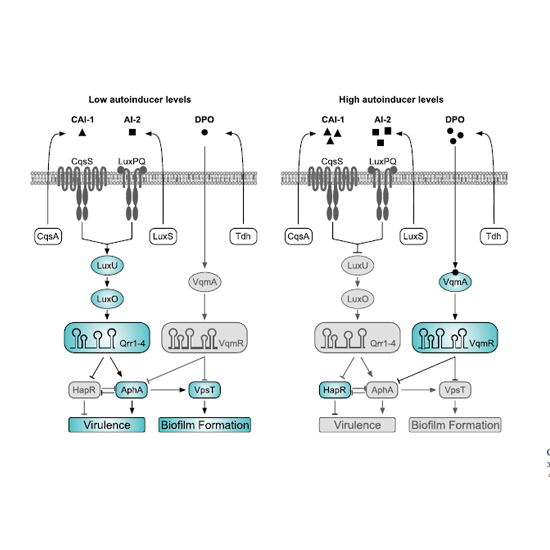Three autoinducer molecules act in concert to control virulence gene expression in Vibrio cholerae
05-Jan-2019
Nucleic Acids Research, 2019, 1, doi: 10.1093/nar/gky1320
Nucleic Acids Research, online article
Bacteria use quorum sensing to monitor cell density and coordinate group behaviours. In Vibrio cholerae, the causative agent of the diarrheal disease cholera, quorum sensing is connected to virulence gene expression via the two autoinducer molecules, AI-2 and CAI-1. Both autoinducers share one signal transduction pathway to control the production of AphA, a key transcriptional activator of biofilm formation and virulence genes. In this study, we demonstrate that the recently identified autoinducer, DPO, also controls AphA production in V. cholerae. DPO, functioning through the transcription factor VqmA and the VqmR small RNA, reduces AphA levels at the post-transcriptional level and consequently inhibits virulence gene expression. VqmR-mediated repression of AphA provides an important link between the AI-2/CAI-1 and DPO-dependent quorum sensing pathways in V. cholerae. Transcriptome analyses comparing the effect of single autoinducers versus autoinducer combinations show that quorum sensing controls the expression of ∼400 genes in V. cholerae and that all three autoinducers are required for a full quorum sensing response. Together, our data provide a global view on autoinducer interplay in V. cholerae and highlight the importance of RNA-based gene control for collective functions in this major human pathogen.











